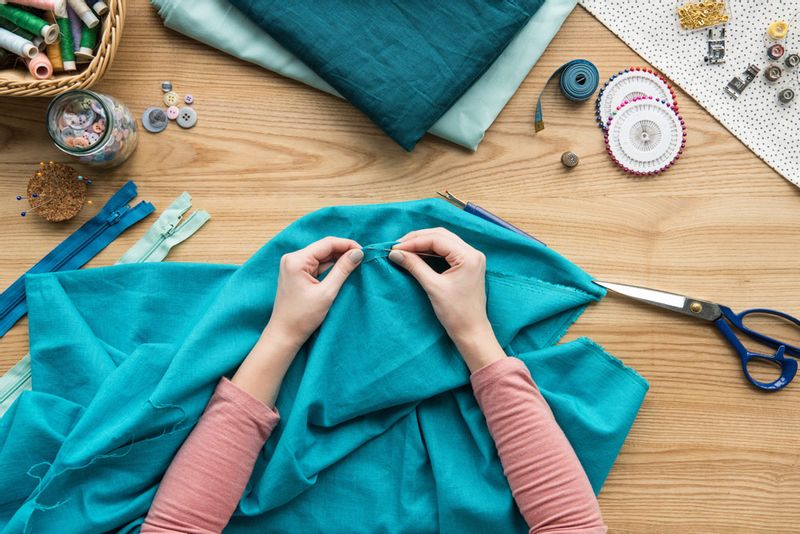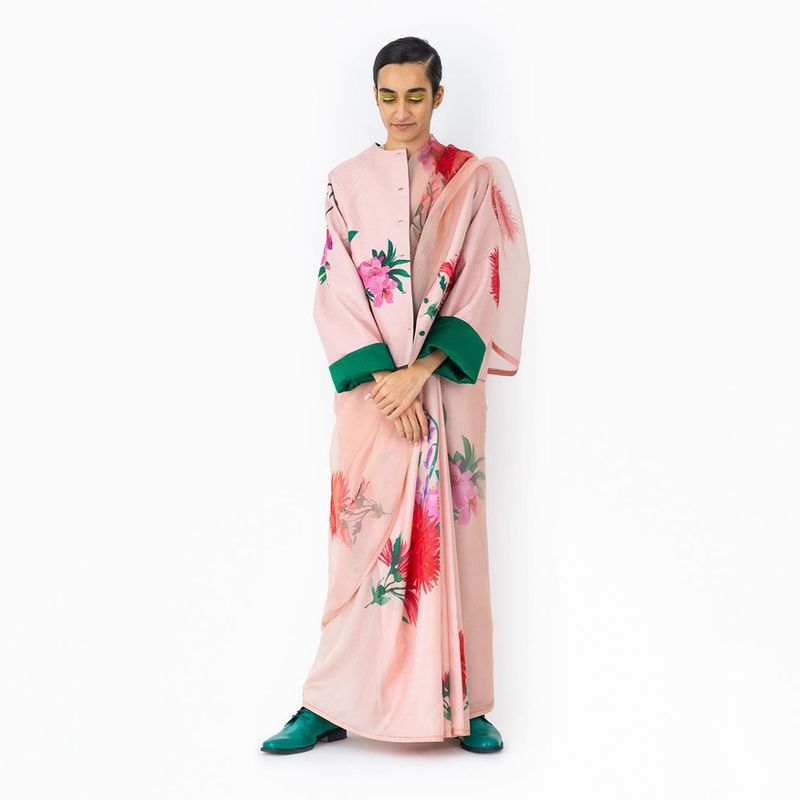My grandmother owned very few possessions in her life but lived like a true queen. She owned a few pristine salwar kameez which were impeccably starched. Out of all her jewellery, she only wore a strand of pearls. She owned one purse, two pairs of shoes, and perhaps, her only indulgences were beautifully embroidered handkerchiefs and perfumes. Blessed with beautiful skin and thick black hair till the day she passed, she sparkled like only those who live a life of simplicity.
In the last few years, I too have been whittling down my wardrobe, drawing in a little from her philosophy, a little from Marie Kondo and a lot of my own, to build an ethical wardrobe. Fashion, as oft been quoted, is the world’s second most polluting industry. And the pandemic has shown that our current lifestyle is untenable, pushing us to clothes that are more leisurely and comforting. So, how can we use all this knowledge to bring together a sustainable fashion sensibility that is ethical, gentle on the earth and your skin? This is what I have found.
1. Begin with a post-mortem of your closet

Cleaning out closets reveals more than dead skeletons. It reveals deep fashion regrets that haunt us (Looking at you, shoulder pads!) But the first step is to assess what you have and why you bought it. Does it really resonate with your current style? Sifting through old clothes gives you a sense of what you have in excess (in my case, it’s white handloom pyjamas). In your case, it might be jeans!
Old unsustainable clothes are not to be frowned upon. If you love them, continue wearing them (or make them into nightwear if they are shabby), until you can recycle them into rags. If you don’t love them and haven’t worn them in six moth ridden years, but they are in pristine condition, donate them to siblings or colleagues or charities. If they are in bad shape, make them into dusters and mops.
I don’t follow Marie’s Kondo’s philosophy in discarding clothes, but I do believe your clothes should spark joy. After all, your wardrobe is a reflection of your personality. Don’t outrightly reject perfectly good clothes, but don’t hold on to unworn clothes for dear life either.
2. Preloved is swell

Being the youngest in my family, I have grown up and continue to receive a lot of preloved clothes, which might not have sustainable credentials, to begin with. What’s important is that you need to keep such clothes in circulation and wear them, rather than letting them reach a landfill. Over the years, I have received and given away many clothes, many of which I dearly loved, but couldn’t fit in anymore. You can also arrange a clothes swap among friends and siblings. This philosophy applies beautifully to heavy traditional wear and luxury couture. If you don’t want to wear them again, let someone else who would love to.
3. Dial the digits of your Masterji

Whenever I travel, I buy handloom fabric or saris from the destination I visit. Bringing that back, I get it stitched by masterji, which results in clothes that I love, supporting India’s traditional textile industry, while giving work to local masterjis. The easiest way to do this is by replicating a design that you like or get simple, fresh designs made that put the spotlight on the fabric. This any day beats buying into fast fashion which 100 other women are wearing.
4. Style sensibly

Impulse buys can leave you stuck with one-off pieces which you can fall out in love with. Invest in pieces that will last you a long time and can be mixed and matched. For instance, a loose-fitting crop top can be worn with jeans, a saree and as part of a cord set. If you live in a cooler climes, invest in wool trousers with ample bandwidth at the waist that will see it last through years. My grandmother owned an expensive, beautiful wool coat that she wore for decades, and passed it on to me. Accessorising with scarves, jewellery and bags will keep it fresh and ‘grammable.
5. Shop smartly and maintain clothes properly

Support small companies with transparent supply chains and buy directly from artisans and craftsmen. This has held me in good stead. Also, instead of buying throwaway fashion, I focus on buying quality separates which I can mix or match, or clothes in solid neutrals which I can layer up and accessorise differently each time I wear it. Invest in quality fabrics and look after clothes properly. Remove any food stains and wash them with bio-based clothes wash or genteel. Only if required get them dry cleaned at a green dry cleaner. Store them safely in soft mulmul bags.
Before buying something, a great question to ask is, do you really need it? Can you buy it from a vintage store or get it in a clothes swap? Is it gentle on the earth, gentle on your skin and ethically made? If you do succumb, make space for it by removing a few items from your closet. Welcome it home with love. Its journey from the farm to your hanger has been incredible, so remember it the next time you wear it.
Sustainable Shopping GuideVintage clothingWe love Bodements and Retro Days that source pre-loved garments from across the world. Operating out of Nagaland, Carol's Shop handpicks clothes by Carol Humptsoe. The feminist Red Empress is obsessed with prints from the Orient. Check out the Manipur-based affordable Folkpants. Rental clothingRenting clothes is a great way to own designer wear for a day. Check out Lionise that stocks clothes from India and international designers such as Zuhair Murad, Valentino, Louis Vuitton and Manish Arora. Other companies include Flyrobe and Wrapd. Children’s clothingThere are many sustainable labels jostling for space which cater to tiny tots. Check out Malabar Baby, World of Born, Mi Dulce An'ya, Ambaram, and Jammy & Co. Men’s fashionSustainable fashion for men isn’t growing at the same explosive pace it is growing for women. But there are a few brands worth checking out. For hemp clothing, look at B Label. No Nasties specialises in Fairtrade, organic cotton clothing. Iwearme, Treewear and Northmist make organic cotton tees and more. Designers such as Rajesh Pratap Singh work with sustainable fabrics and handlooms that form the USP of their collection. Women’s fashionYou’re spoilt for choice when you come to women’s fashion considering the number of ethical, handloom and conscious labels. We’re just listing just a few of our laundry list of favourites. Raw Mango, Kishmish, Eka , Taaka Clothing and Pero celebrate India’s rich textile and handloom heritage. Labels such as Swara Voice of Women and Maati by Neha Kaabra are rooted to the earth, while Doodlage is known for upcycled fashion and working with waste fabric. For hemp clothing, check out Sui and Reistor. |





